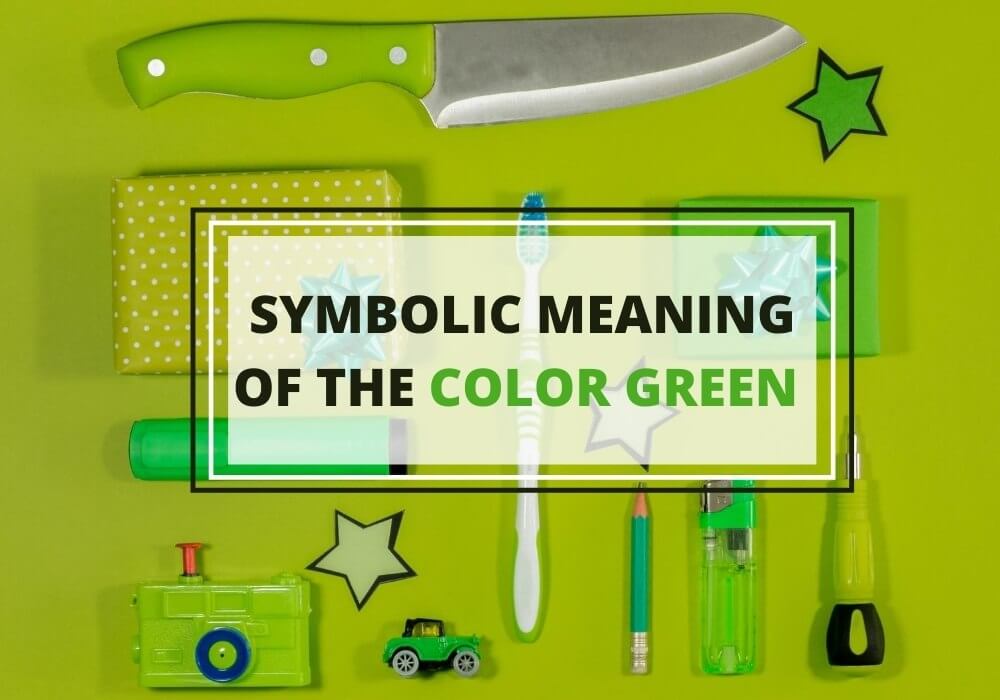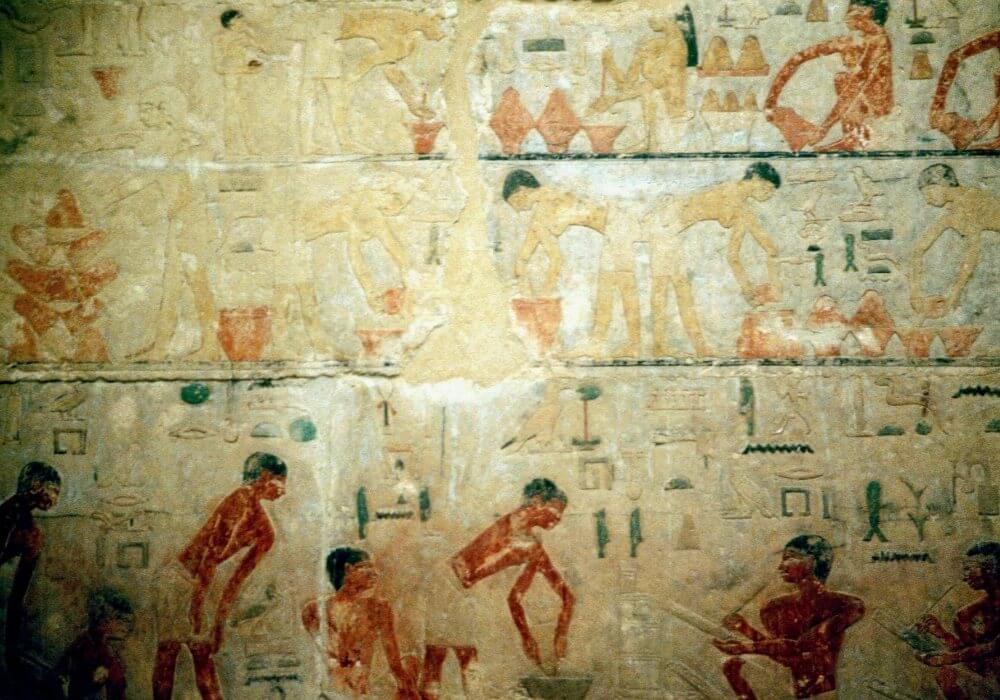
Table of Contents
Green is more than just a color in nature – it carries a wealth of significance that echoes across different cultures and situations. From symbolizing the start of spring to representing growth and harmony, green tells a complex story.
Let’s explore the world of green and discover its deep symbolism and how it influences our lives.
What Does the Color Green Symbolize?

The color green carries a mix of meanings, both positive and negative. It can mean many things, including growth, renewal, and nature. It’s linked to spring and caring for the environment. But it can also mean greed or inexperience, as shown in phrases like “green with greed” or “greenhorn.”
Green’s wide range of meanings makes it a unique and important color in how we see the world. Here’s the meaning and symbolism behind it.
1. Safety and Permission
Green often means safety and permission. For example, green traffic lights signal that it’s safe to go. This is a clear contrast to red, which means danger or stop. In healthcare, green often appears in advertising to show that products are safe and environmentally friendly.
2. Envy and Jealousy
William Shakespeare first used the phrase “green-eyed monster” in ‘Othello’, making green a symbol of envy and jealousy. This phrase suggests deep envy and is well-known in English.
3. Strength and Good Luck
Different cultures see green as a sign of strength and luck. In Chinese traditions, green dragons symbolize power and good fortune and play a big role in festivals and royal symbols. While some Western stories show green as the color of the devil, Irish tales feature the green-wearing leprechaun, a fairy associated with luck and treasure.
4. Illness and Poison
Interestingly, green can also mean sickness or poison. People often think of illness when they see a greenish skin tone. In stories and media, green is commonly used to represent toxic substances.
Symbolism of Green in Different Cultures

Green, a color rich in cultural and symbolic significance, plays a vital role in various traditions around the world. In Ireland, green is not only a prominent color on the national flag but also symbolizes the country’s lush landscapes, earning it the nickname “Emerald Isle.” This color is deeply ingrained in Irish culture, prominently featured in festivals like St. Patrick’s Day, and is associated with iconic symbols such as the shamrock and mythical creatures like leprechauns.
In Islamic tradition, green holds immense importance. The Quran links it with paradise, highlighting its spiritual significance. Historically, the Fatimids in the 12th century chose green as their dynastic color. The banner of Prophet Muhammad was green, a hue now ubiquitous in Islamic nations, symbolizing a deep religious and cultural connection.
In Western countries, particularly America and Europe, green is a multifaceted color. It represents nature, health, youth, hope, and life, often associated with spring. However, it also has connotations of envy and can indicate poor health or toxicity. A notable example of green’s symbolic role is in the United States, where the ‘green card’ represents the permission for permanent residency.
In Asia, especially China, green is viewed positively, symbolizing happiness, fertility, and growth. It’s linked with the vitality of sunrise, life’s progress, and the direction east.
Egyptian culture revered green for its associations with rebirth and regeneration. This reverence stemmed from the Nile’s annual floods that brought agricultural prosperity. Green was also linked to Osiris, the god of the underworld, symbolizing good health and eternal life.
The Romans, valuing green greatly, associated it with Venus, the goddess of love and beauty. This connection underscores the color’s significance in Roman mythology and culture. In Thailand, green is considered lucky for those born on Wednesdays, reflecting the color’s unique cultural relevance in daily life. Green’s diverse meanings across different cultures illustrate its universal significance.
Personality Color Green

People who like the color green often show traits of being calm, balanced, and nurturing. They usually seek stability and harmony in their lives and are known for being reliable, down-to-earth, and practical. They often prioritize safety and security in both personal and professional areas. These people typically feel a strong connection to nature, enjoying the outdoors and bringing a calming presence to their surroundings.
Green personalities have a clear sense of what is right and wrong. They aim to create balanced and fair environments. They might resist change, preferring things to be consistent and predictable. This trait helps them manage their emotions well and stay level-headed when facing challenges.
Those who resonate with green are compassionate and genuinely want to help others. They tend to be caring and nurturing, making them good friends and partners. They’re also practical, especially when solving problems, offering realistic and well-thought-out advice.
Pros and Cons of the Color Green

Green has many positive aspects, one of them being that it can alleviate anxiety, nervousness and depression. It’s said to have healing powers and can even improve vision and reading ability.
Some people claim that the color also helps them to concentrate, calm down and feel more relaxed. It’s a color that impacts the mind and body in a positive way rather than in a harmful way like some colors such as black or blue may.
It’s possible that the calming effects this color has on people can be due to its association with nature which people find refreshing and relaxing which is why green is often used for decorating purposes. On the negative side, green can be perceived as a color that’s too bland if it’s incorrectly used.
Variations of the Color Green
Green comes in many shades, each with its own feel and use. Pale, soft mint green gives a fresh, calm feeling, often used to refresh a space. Seafoam green is a bit quieter, reminding people of the peace of the ocean.
Lime green, brighter and full of life, adds energy and fun to any place. Emerald green, luxurious and sophisticated, brings elegance like precious gemstones, adding richness. Forest green, deep and earthy, mirrors the colors of dense woods, giving a sense of connection to nature.
Each green shade has its own character, letting people express different moods and styles, from peaceful to energetic.
The Use of Green in Fashion and Jewelry

Green is a popular color in fashion and jewelry because it suits many skin tones. Emerald green, especially, gives a luxurious look and is in high demand for both clothes and jewelry. Green has become a trendy color for weddings, with many brides choosing green dresses for their special day, as a glamorous alternative to white.
However, pairing green clothes with other items can be tricky for some. Using a color wheel to find colors that go well with green can help. Too much green might look dull, and this effect depends on the shade. Green clothing can also seem less slimming than black.
In jewelry, green is a favorite choice, especially for engagement rings. Popular green gemstones include:
- Green Diamond: Rare and valuable, with synthetic options being more affordable.
- Green Sapphire: Durable and increasingly popular, often heat-treated to enhance color.
- Emerald: Known for its stunning color but usually fragile and treated.
- Jade: Valued in Asia for its toughness, ideal for various jewelry styles.
- Green Agate: An affordable stone that’s often enhanced.
- Tsavorite Garnet: A rare and expensive type of garnet.
- Peridot: Noted for its unique lime-green color and good durability.
- Malachite: Famous for its bright color and natural patterns, especially when combined with azurite.
Each green gemstone adds unique beauty to jewelry, keeping green a popular choice in fashion.
The Use of Green Throughout History

Now that we’ve had a detailed look at the color green and its symbolism, let’s take a look at the use of this color throughout history.
Green in Prehistory
While it’s not possible to say exactly when the use of the color green emerged, we can guess from what the evidence shows. Although green was not to be found in Neolithic cave paintings, the Neolithic people who lived in northern Europe did make and use a green dye for their clothing and this seems to be the earliest known evidence of its use. They made it from the leaves of birch trees. The dye was very low in quality, looking more brownish than green.
Ancient Mesopotamian cave paintings depict people wearing vibrant green clothes, but no one actually knows how the color was produced. It’s suspected that they made the pigments and dyes from plants, vegetables and fruits but the actual method they used hasn’t been discovered yet.
Green in Egypt
The ancient Egyptians used Malachite, a type of green colored mineral that was mined in the eastern desert and in Sinai to paint on the walls of the tombs or on papyrus scrolls. They were also quite creative in that they mixed together blue azurite and yellow ochre to make the color. They dyed their clothes by first coloring them with yellow dye which was made from saffron and then they soaked them in blue dye made from the woad plant. Together, the result of these primary colors was green.
Green in Europe
Green was a color commonly linked with merchants, wealth, bankers and gentry during the post-classical period in Europe. However, it wasn’t used by Royalty or the Upper Classes, and wasn’t considered a color of significance.
Green in Greece
At times, the ancient Greeks (700-480 BC) considered blue and green the same color. Green wasn’t included in the four classic colors used in Greek paintings which were red, black, white and yellow. Therefore, green was hardly ever used in Greek art.
Green in Rome
Green was commonly used in Rome, considered an important color and appreciated greatly by the Romans, unlike the Europeans and Greeks. The Romans created a fine, green earth pigment which was used extensively in wall paintings of Vaison-la-Romaine, Herculaneum and Pompeii as well as many other cities in Rome.
The Romans hung copper plates over hot vinegar inside a sealed pot which caused the copper to weather over time resulting in the formation of green crust on the copper. This was how verdigris was created, a green pigment that’s rarely sold today for artwork since it was found to have toxic properties. Up until the 19th century however, it was a very popular green pigment and the most vibrant one available.
By the dawn of the 2nd century AD, green was widely used in Roman art, glass and mosaics and there were even 10 different Latin words for various types of green.
Green in the Middle Ages and Renaissance
During the Middle Ages and the Renaissance period, the color of a person’s clothes showed their profession and social rank. Green was considered a color of lower rank whereas only red was worn by the nobility.
All the vegetable green dyes available at that time were of poor quality and faded when washed or exposed to sunlight. These dyes were made from all kinds of plants and berries including ferns, nettles, leeks, plantains and buckthorn berries. It was only later in the 16th century that a higher quality green dye was discovered.
Green in the 18th and 19th Centuries
In the 18th and 19th centuries, various synthetic green dyes and pigments were being created and these quickly replaced the earlier vegetable and mineral ones that had been used. The new dyes were more brilliant and less prone to fading than the vegetable ones but some of them were banned eventually since they contained high levels of arsenic.
Goethe, the German philosopher and poet, declared the color green to be the most restful color, appropriate for decorating people’s bedrooms and it was after this that the popularity of the color began to increase. Famous painters began to depict lush green forests and landscapes and later on, in the latter half of the 19th century, the color was being used in art to create certain specific emotions rather than to mimic nature.
In the 19th century, green and red were both standardized as colors of the international railroad signals and the very first traffic light used gas lamps in both colors just in front of the Parliament Houses in London. Unfortunately, the light exploded a year after it was installed leaving the policeman who operated it severely injured.
Green in Modern Times

Green became a political symbol in the 1980s used by the Green Party in Germany as well as in several other European countries. It was also symbolic of the environmental movement which included conservation and green politics. Today, green packaging is used to signal healthier, organic or natural products.
Wrapping Up
Green is a cooling, refreshing color that has continued to gain popularity over the years. The meaning of the color can change depending on religion and culture, but its beauty and classic look remains a favorite of many people around the globe.








